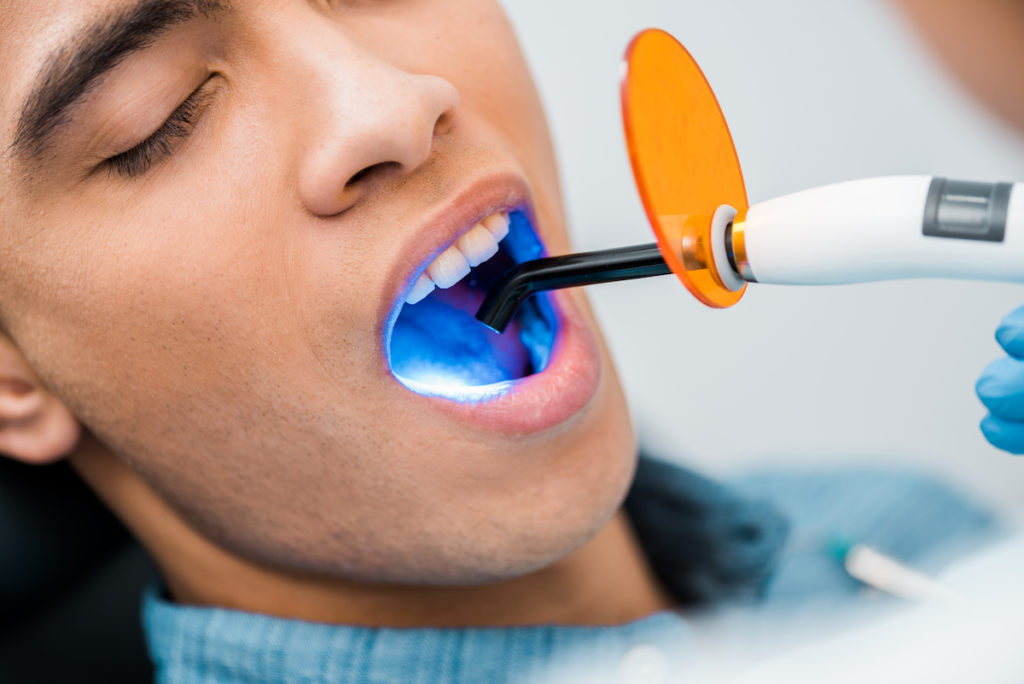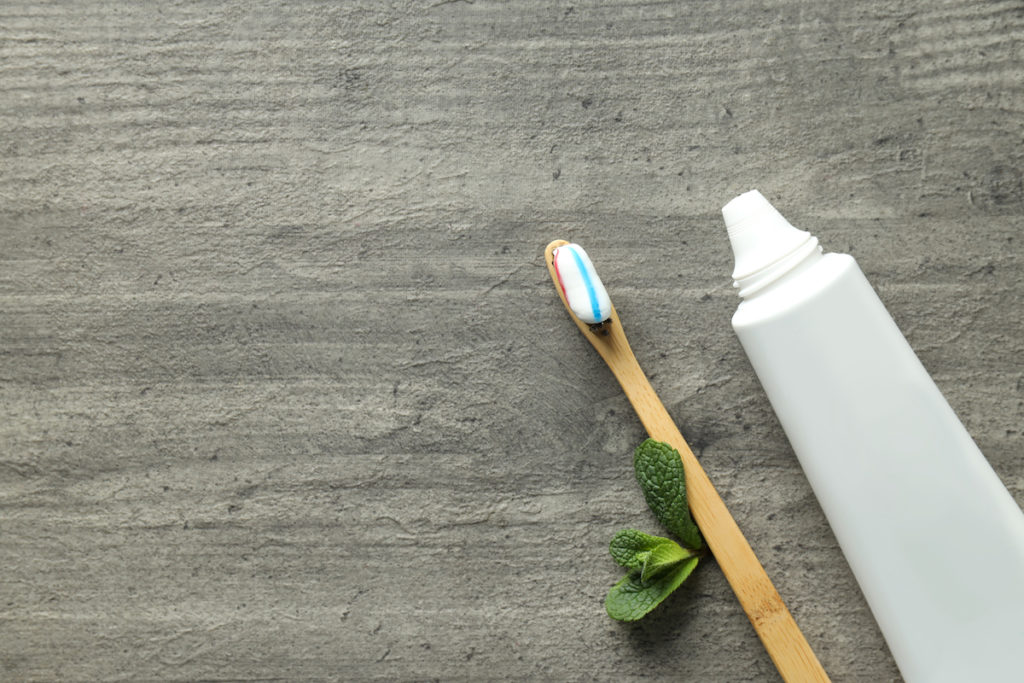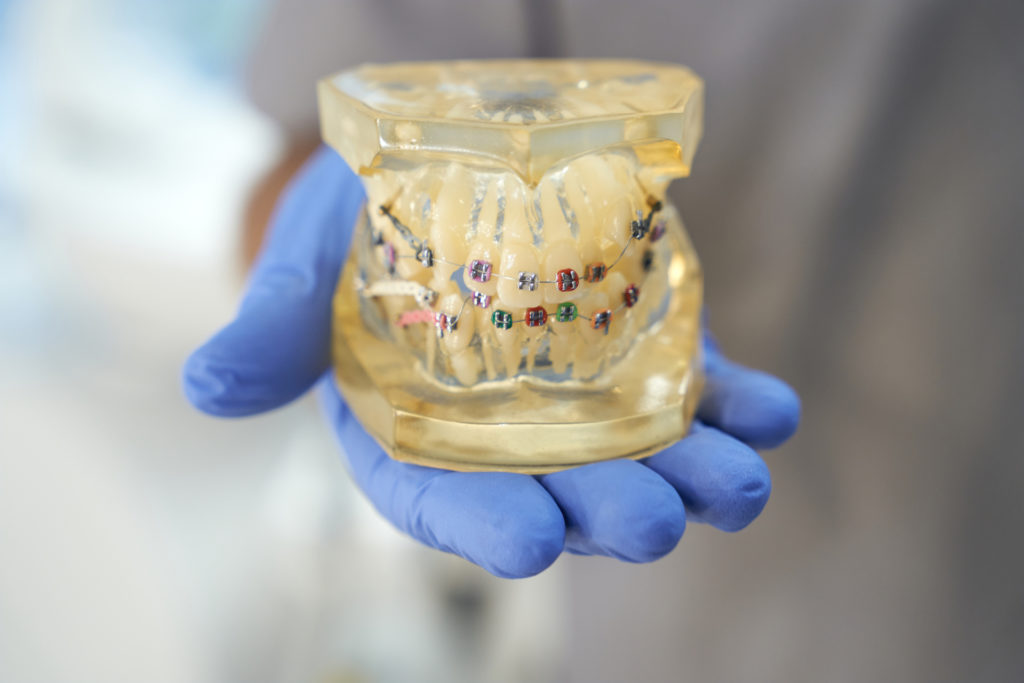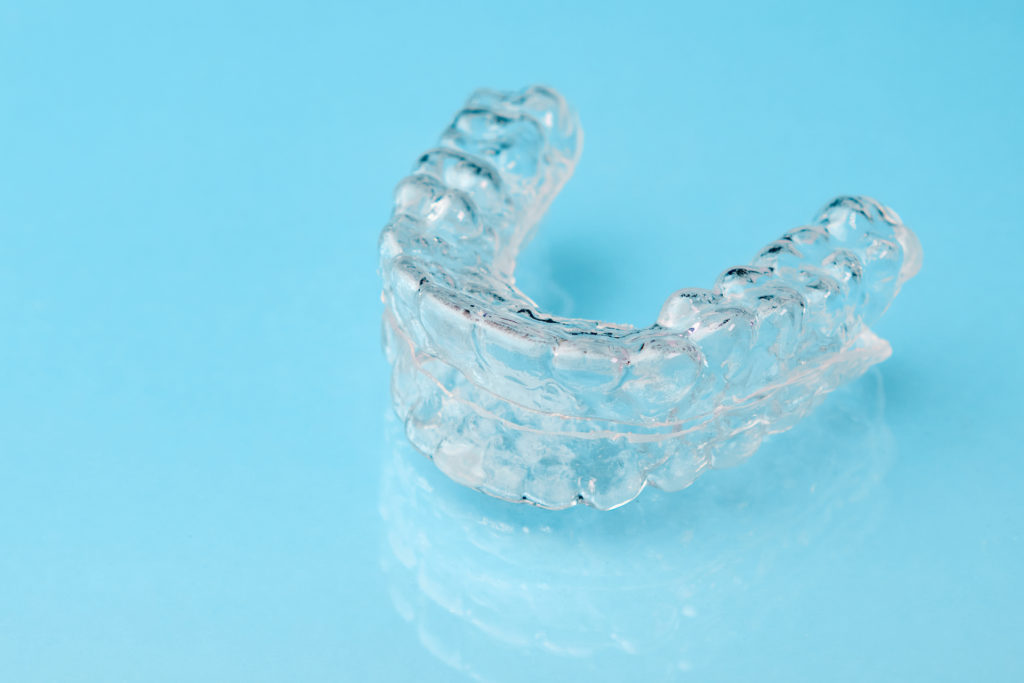How Do Braces Work to Straighten Your Teeth?
You probably know that braces help move teeth into a healthier and more attractive alignment within your mouth. They can produce amazing results for both children and adults. But chances are, you already know that but may be wondering, "How do braces actually work?" Let's take a look at how braces achieve their results and answer some key questions about the procedure.
How Do Braces Work to Move Teeth?
Braces work by putting pressure on your teeth. Even though the amount of pressure applied is very low, it's constant. This means it very gradually moves your teeth into the desired position.
Your braces work on your periodontal ligaments, which connect your jaw to your teeth and allow natural movement of your teeth when you're chewing. They compress some ligaments and stretch others to encourage the teeth to move. As the braces apply pressure to those ligaments, they send a message to specialized cells that dissolve your jawbone, allowing the teeth to move.
As the teeth move, the gums and blood vessels connected to that tooth move along with it. Tooth movement is very slow, about 1 millimeter per month under the constant pressure of the braces. After each tooth is in its final new position, more specialized cells rebuild your jawbone as part of a process known as bone remodeling.
The Parts of Braces
The key parts of your braces are the brackets and the archwires. The brackets, which are typically made of metal, plastic, or ceramic, are bonded to each tooth for your entire orthodontic treatment. The archwires are metal wires that are attached to the brackets. The archwires are made of a metal that wants to stay straight. However, your body heat activates these wires to stiffen, so they pull gently but continuously against your teeth, forcing the teeth to start to move.
A few other parts of your metal braces include:
- O-rings. These are the small rubber bands that hold the archwire and bracket together. Typically, these are changed at every appointment. You can choose natural, clear or brightly colored O-rings, which are also known as orthodontic ligatures.
- Dental adhesive. This material bonds the brackets to your teeth.
- Spacers. These metal or rubber rings can go between your molars to help push your jaw forward and create more space in the back of your mouth.
- Springs. Sometimes, orthodontists place coil springs on the archwires to nudge two teeth apart and create more space between them.
- Buccal tubes. These metal tubes attach to your molars to anchor your braces at the back of your mouth.
- Headgear. This nighttime-only device puts extra pressure on your teeth to get them to move.
Do Braces and Clear Aligners Work Differently?
Clear aligners and braces, which attach to the back of the teeth, are also largely invisible when you're smiling or talking.
While clear aligners use a different method than metal braces, it accomplishes the same results, moving your teeth into a new position. Traditional braces use archwires, brackets, and O-rings to achieve this goal. Clear aligners, in contrast, use transparent plastic trays to apply a constant force to the teeth so that they move gradually.
Clear aligners apply force differently than fixed braces. Rather than being glued to the tooth, they consist of removable clear aligners. The orthodontist plans the entire course of treatment up front on a computer, which then designs a series of trays, or aligners, that are unique to each person. Each aligner creates friction on the tooth, nudging it to move. As the teeth move, the orthodontist replaces the clear aligner with a new tray that pushes the teeth further in the desired direction.
What Problems Are Usually Fixed With Braces?
Braces can correct the overcrowding of teeth within the mouth, as well as overbites, underbites, and crossbites. Crowded teeth can occur when the mouth or jaw is too small for the teeth. Without correction, teeth can push each other out of place so the line of the teeth is no longer straight. Braces move the individual teeth to make them sit in a straight line with plenty of room for each tooth. Sometimes, the wisdom teeth are removed to help make room in the mouth.
When an overbite is present, the upper teeth don't align neatly with the lower teeth. Instead, they push forward in front of them. An orthodontist may correct an overbite by moving the front teeth further up or back or by moving the lower teeth forward or down. Braces can also be used to pull teeth toward the front of the mouth.
Typically, an orthodontist begins by aligning crooked teeth so they're in a straight line. Next, they focus on correcting any bite issues and closing gaps between teeth. They make sure all teeth are in their proper position before removing the braces.
Risks and Considerations in Getting Braces
If you work with a licensed and certified orthodontist, you shouldn't face any risks of a poor outcome from your braces. Teeth are not made weak by braces. In fact, your oral health is likely to improve significantly. When people who are not certified orthodontists attempt to provide braces, they could end up with improper teeth placement or bite.
The most common risk for patients with orthodontic braces is gum disease or tooth decay. These aren't the result of the orthodontics but of a failure to clean their teeth and gums adequately around the braces.
Do Braces Hurt?
You might experience some discomfort or minor soreness when you first get braces or after each adjustment. As the teeth move slowly into their correct position, your mouth will become inflamed. Typically, you can handle the pain with over-the-counter painkillers or ice packs.
Some people also experience irritation inside their mouths while wearing braces. Your orthodontist will provide a type of wax to help you protect your mouth tissue. As the teeth continue to move, the soreness should go away. For most people, this occurs within a week or two.
Cost of Braces
Children's braces typically cost about $5,000, but many parents will be glad to learn that their health insurance will cover at least part of the cost. Adult braces and clear aligners are less likely to be covered by insurance. At Risas Dental, we offer significantly lower pricing for braces at $3,000, when paid in full, or payment plans that require no credit checks and spread the cost out over the course of the treatment.
Are Braces and Orthodontic Treatments Safe?
Braces are one of the safest dental treatments, with a long history of helping people achieve a healthier, more attractive smile. When you get braces, you don't have to receive any injections, and there's no drilling involved.
Having straight teeth makes your bite and mouth healthier and improves your appearance, giving you straight teeth and a more attractive and healthier smile. While braces take some time to achieve results, most people find the experience well worth it in the end. At Risas Dental, "we speak patient." Contact us to learn more about whether orthodontics is right for you.
Frequently Asked Questions
Good oral hygiene is extra important when you have braces to prevent gum disease and tooth decay around the edges of the braces. You should floss twice a day and may want to use an interdental toothbrush to clean around the brackets and archwire.
Dental braces work the same way for children and adults. The major difference is that adults need a little more time to get the same results. That's because children are still growing, so their teeth move more quickly. Early orthodontic treatment is recommended as a result.
Braces or clear aligners may alter your face shape slightly, depending largely on exactly what your orthodontist is trying to accomplish with your braces. Your lips and the area around your mouth may change a bit as your teeth move. Your lips and jawline themselves are not going to change from your braces. The subtle changes that may occur to face shape around the mouth are typically more obvious in children than in adults.
Your bones take 3 to 6 months to grow around your teeth and hold them securely in their new position. During that time, the teeth can continue to move slightly. Because of this, orthodontists typically give patients retainers once they remove the braces. Retainers are removable trays that keep the teeth in place after they're no longer being held secure by the braces. You can expect to wear a retainer full-time for the first 3 to 6 months. After you're cleared to remove the retainer, your orthodontist is likely to recommend that you wear a retainer while you sleep for at least a couple of nights per week to ensure your teeth do not move back to their original position.
Braces move teeth but they also affect the bones of your mouth. As the braces apply force to your teeth, the bone on one side of each tooth is removed, with new bone replacing it as the tooth moves. The process of bone remodeling, as it's called, is similar to the process by which babies grow into children and then into adults, with new bone being created along the way.
The orthodontist makes a cast of your mouth to analyze it so they can create the best possible orthodontic treatment plan. The cast helps the orthodontist see all the issues to be addressed, including in the back of the mouth, to be able to plan how to create the right force in the right places to move your teeth. In some cases, especially when clear aligners are anticipated, the orthodontist may be able to make a digital scan of your mouth to create the plan.
Teeth whitening used to be too expensive for many people but that’s changed over time. Now that teeth whitening has become more accessible, it's important to know which methods are safe and how to whiten teeth without causing damage.
Many at-home tooth whitening methods have the potential to cause harm but your dentist can give you trays and gel containing carbamide peroxide. The trays are custom-fitted to protect your gums and your dentist makes sure that your mouth is healthy enough before you get started.
Below is everything you need to know about teeth whitening including risks, benefits, and tips for maintaining excellent oral health.
Why Do Teeth Turn Yellow?
Sooner or later, yellow teeth become a reality for everyone who doesn't take steps to whiten them. While certain lifestyle factors contribute to tooth staining, some individuals who see less-than-white smiles when they look in the mirror are just unlucky.
But no matter what, you can take steps to get whiter teeth and feel more confident and secure. Here are some reasons why teeth turn yellow:
- Genes. When it comes to teeth, luck of the draw plays a big role. Some people are born to have darker teeth while others naturally have lighter, whiter teeth. Most dental practices refer to charts that have four basic shade ranges.
- Thin enamel. Enamel is the shiny outer surface of your teeth that has a porcelain white appearance when you're very young. When the enamel thins, the brown-yellow dentin underneath shows through.
- Age. As you age, stains build up and enamel gets thinner. Pretty much everyone's teeth will eventually turn yellow but some people also have grayish staining or deep food stains.
- Food and drink. Tea and coffee are two of a white tooth's worst enemies and so are a bunch of foods that are otherwise healthy. Spices, berries, tomatoes, and vinegar can stick to your teeth and leave them discolored.
- Smoking. Smoking is bad for you whichever way you look at it, plus it turns your teeth yellow.
- Medicine. Certain antibiotics you might have taken when you were a child can cause yellow teeth. Antihistamines and some high blood pressure medicine can also impact tooth whiteness.
- Trauma. Physical injury that impacts tooth enamel can lead to discoloration and a gray or black outer appearance.
- Grinding. Tooth grinding is something many people do. It can weaken tooth enamel, causing discoloration.
Consequences of Improper Tooth Whitening
Despite the fact professional teeth whitening is now achievable for anyone, some people still take the risky option of doing it at home. Whitening strips and other hydrogen peroxide-based products carry significantly more risks than a trip to the dentist.
Let's look at some risks of DIY teeth whitening:
- Burns. DIY whitening kits usually come with a mouth guard and gels containing hydrogen peroxide or carbamide peroxide. But unlike the custom tray, you get from your dentist, this is a standard-sized tray, which means the risk of harm is significantly higher.
- Infections. If you use DIY kits regularly, repeated chemical burns can leave sensitive parts of your mouth and gums exposed and at risk of infection.
- Gums. Although your dentist can choose a gel with the correct concentration of chemicals for your mouth, over-the-counter kits are often excessively strong. This can damage gums.
- Enamel. Be extra careful of teeth whitening kits that claim to instantly give you whiter teeth. They might contain chlorine dioxide, which can strip enamel and damage your overall oral health.

Professional Teeth Whitening Options
Visiting your dentist is the safest and most effective method for getting a brighter smile. However, there are other factors to consider such as cost and how long the results last.
There are two main options for professional tooth whitening. Learn more about each below.
Custom Whitening Trays With Carbamide Peroxide
The safest, longest lasting, and most affordable method of tooth whitening is getting an at-home custom kit from your dentist. The dentist takes a mold of your mouth and creates a custom mouth guard that you'll fill with whitening gel and wear overnight or for an hour at a time. The trays fit snugly in your mouth to protect your mouth and ensure you get even coverage.
Your dentist will advise you on how much gel to use and it's important to stick to that amount. Resist the temptation to use more for faster results, as it could leak out of the tray and harm your gums. As long as you're disciplined with using and reusing your custom trays, you can keep using them for up to 5 years.
In-Office Whitening
In-office teeth whitening is significantly more expensive than custom trays and doesn't typically last as long. It usually requires several appointments, and sometimes lasers and LED lights are used as well as teeth whitening gels. Both of these additional treatments hike up the cost. Plus, while one study suggests LEDs make whitening more effective, other studies show no additional benefits
Natural Teeth Whitening Methods To Avoid
If you search “tooth whitening” on Google, a million articles will pop up with various claims about the latest magic natural cure for white teeth. Be wary of any advice that isn't backed up by science or approved by dentists.
There are a number of techniques that claim to whiten your teeth but actually harm them.
Here are the top three:
- Acidic Produce
Some people claim that rubbing pineapple, strawberries, lemon, or orange peel can help you whiten your teeth. But as healthy as these food items are in moderation, they contain high amounts of acid and sugar. Both of those ingredients break down enamel and promote tooth decay, which is the opposite of teeth whitening! - Oil Pulling or Brushing With Spices
Some people choose to replace brushing with either oil pulling or oil pulling combined with spices such as turmeric. Again, these food items are perfect ingredients for your dinner — but there's no evidence to suggest they clean or whiten your teeth. - Baking Soda or Charcoal
Baking soda and activated charcoal are mild abrasives but they've still gained a ton of popularity as tooth whitening agents. Charcoal scrubs and pastes containing baking soda can do serious damage to your mouth, wearing away enamel and leaving the dentin underneath exposed. Dentin is more yellow and softer than enamel, and any rough or grainy teeth whitening agent has the ability to expose it.
At-home whitening strips are another DIY method to avoid because there's no protection for your gums or the rest of your mouth. The best way to whiten teeth is with the help of a dentist and dental grade hydrogen peroxide or carbamide peroxide.
Food and Drinks To Avoid With Whitened Teeth
Once your teeth have been whitened, the way you eat and drink plays a major role in how long the results last. The following food and drinks should be avoided for general oral health, but especially if you want to keep your teeth pearly white:
- Coffee. Most people like to start their day with a hot cup of coffee, which can make this one a challenge. If you're not willing to give it up entirely, consider using more milk or reducing the number of cups you drink per day. If you're extra careful, you could even drink your coffee through a straw.
- Tea. Believe it or not, black tea is more likely to stain your teeth than coffee. Sugar-free green tea, matcha, fruit tea, and herbal tea are alternatives that won't dampen the brightness of your smile.
- Wine. Red wine is dark and acidic, which makes it an enemy of white teeth. Sorry, white wine lovers — although your favorite drink isn't dark in color, the acid is still high and this can weaken your enamel.
- Juice. Even natural fruit juice has high sugar and high acidity.
- Soda. Sodas containing sugar are terrible for your teeth in every way. If possible, avoid them entirely.
- Chocolate and candy. It goes without saying that most candy and chocolate are bad for your teeth — but it's worth mentioning anyway. If you're looking for a sugar-free alternative, check out Zollipops. They taste just as good and won't affect your smile!

How To Care for Your Teeth After a Whitening Treatment
The better you care for your teeth after whitening them, the better the results will be and the longer they'll last. Here are some ways to practice good care after teeth whitening.
Follow Whitening Guidelines
Your dentist will advise you on how to use your custom trays but the following advice can help you get the most of them:
- Always use a toothbrush and interdental brushes or floss before applying the whitening gel.
- Use the exact amount of gel your dentist advises you to avoid harming your oral health.
- Never eat, drink, or smoke when your trays are inserted.
- Brush your teeth thoroughly every time you remove your mouth guard.
- Clean the trap with water and a toothbrush before storing it in a dry, clean container.
If any of the guidelines above do not follow the advice you've received from a dentist, follow the guidelines given by your dentist instead.
Add More of These Foods To Your Diet
We've given you a list of foods to avoid so it's only fair to provide a list of foods to enjoy. These foods won't reduce the effectiveness of your tooth whitening efforts:
- chicken
- turkey
- fish
- rice
- pasta
- egg white
- white cheese
- onion
- potato
- bread
- yogurt
- oatmeal
Are Professional Whitening Treatments Safe?
Having your dentist perform teeth whitening on you is the safest way to bring the glistening shine back to your pearly whites. You might experience a little sensitivity after treatment but it usually goes away within a few days. Tooth whitening involves bleaching the exterior of your teeth, which can easily go wrong in a DIY attempt. Your dentist has access to the best products and can ensure you whiten your teeth in the safest, least harmful way — and get the best results.
If you're ready to get the bright white smile you've always dreamed of from a friendly, affordable dental practice, book an appointment with Risas Dental today.
Frequently Asked Questions
A: There is no evidence that suggests turmeric can whiten your teeth, although adding it to meals has plenty of health benefits. It has reported antioxidant, antibiotic, antiviral, antifungal, and anti-inflammatory properties but the American Dental Association (ADA) states that any teeth whitening effects are not supported by science.
A: While some people report getting minimal results from teeth whitening strips, they're not as effective as custom teeth whitening trays from your dentist. They also come with many potential problems. Not only could you end up with patchy, unevenly whitened teeth, but you could also damage your gums and risk weakening your enamel.
A: Professional teeth whitening is perfect for most people. However, if you're pregnant, breastfeeding, allergic to peroxide, or have extremely sensitive teeth, you might not be the best candidate. If you have any dental bridges, implants, crowns or fillings, keep in mind that these won't be whitened in the process.
A: When you choose custom teeth whitening trays, your dentist takes a mold of your mouth and provides you with a mouth guard you can use for up to 5 years. With in-office whitening, results may last for a few months to 3 years. No matter which method you choose, your lifestyle and attention to detail with upkeep ultimately decide how long the results last.

